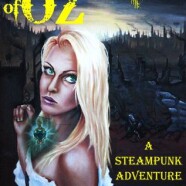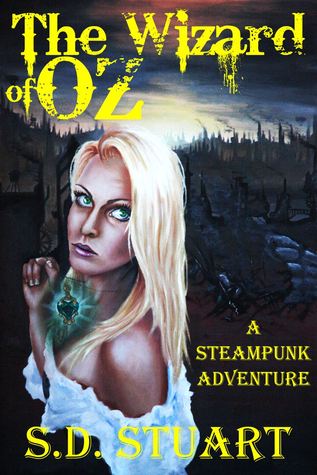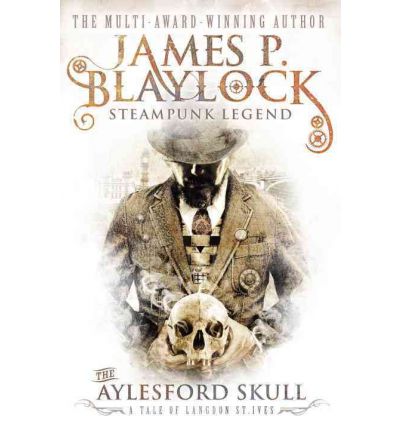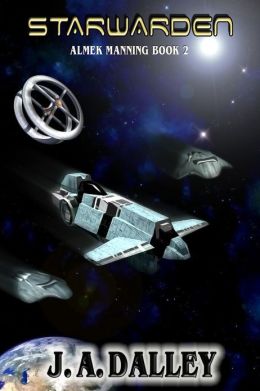Book Review – The Wizard of Oz: A Steampunk Adventure
About three weeks ago, author S. D. Stuart emailed SciFiFX and requested that we review his novel, The Wizard of Oz: A Steampunk Adventure, for our site.  With apologies to the author for the amount of time it took to get this review posted, I nevertheless offer it here for those who are interested.
From the publisher:
There is no yellow brick road here. No emerald city. No lollipop guild. This is the Australis Penal Colony, a continent sized prison referred to the world over as the Outcast Zone. Built to contain the world’s most dangerous criminals, OZ ended up the dumping ground for everything polite society deemed undesirable.
From inside this place a garbled message proves Dorothy’s father is still alive, trapped in a prison with only one way in and no way out. Into this place 17-year-old Dorothy must go if she wants to find her father and keep the promise she made to her dying mother.
She thought she had spent the past seven years preparing to overcome anything that got in the way of fulfilling her promise, but the situation she finds herself is harder and more intense than anything she has experienced before as she drops right into the middle of a power struggle for control over all of OZ. If she has any hope of surviving long enough to find her father, she will need her mother’s guts, her father’s brains and the unexpected help from those discarded and forgotten.
Everyone she meets tells her the same thing. The only person who can help her is the one prisoner who deserves to be in a place like this and refers to himself by the name, Wizard.
The Wizard always asks for something in exchange for his help. Can Dorothy afford the terrible price he will demand?
When I first agreed to review this book, I have to admit a hesitation on my part.  I am a sucker for a well-told steampunk adventure, and I told the author as much in my reply.  But any who know my tastes through my reviews here or comments I’ve made on the podcast know that I am a staunch defender of the classics and feel that today’s market is far too over-saturated with remakes, reboots, re-imagingings, and a general lack of originality.  Indeed, that and a fascination with alternate history are why I find the steampunk genre so refreshing in the first place, and I tend to eviscerate with extreme prejudice when it comes to knock-offs for the sake of making a fast dollar.  One simply cannot deny the appeal, however, of playing in a superior sandbox, especially if that sandbox is as much-beloved and as rich in character and scope as L. Frank Baum’s The Wonderful Wizard of Oz.  If a great story such as this is to be retold, it usually falls into one of two categories.  Typically it is either a tribute book that remains true to what has come before but falls short of what made the original the venerated story that it is, or it is a re-imagining that often changes something fundamentally vital to the story in the quest to become its own work, built upon its own merits and often falling short of the mark for precisely that reason.  Works that fall into this second category don’t always have the love and respect of the source material, and this is why I’m typically critical of such works.  It’s quite literally an almost no-win scenario, yet we all tend to have fun with theses ideas in greater or lesser degrees depending upon personal tastes.
So why did I review this book?  Because I also understand that The Wizard of Oz has a history that’s almost unique amongst classics.  As much as the original novel is cherished, the version that most people hold as the gold standard is the 1939 feature film with Judy Garland, which is in itself a remake of the silent film version – a remake of a remake.  Imagine that.  And yet, that 1939 musical is often considered to be “the original” by most people I encounter.  Interesting, no?  It means that The Wizard of Oz provides a precedent for giving a newer version a chance on its own merits, and it’s this idea that compelled me to give this work its due diligence.
Having given that foundation of how I approach this sort of thing, I can say that this novel does fall into the second category in that it takes what we expect from the story and spins it on its ear.  We know going in that this will happen just by virtue of the title alone or perhaps the promotional blurb as reprinted above.  This is one time that such information is as damning as it is liberating because you instantly have preconceived notions of what to expect.  How could it be otherwise in this case?  For the first half of the book, I had this specter floating over me as it is extremely difficult for me to divorce the source material from a work such as this.  In short, I had the feeling early on that this book would disappoint me.  I have a pretty good track record of anticipating such things, but when I am wrong about that, I make it known.  So you see, in this case, a funny thing happened as I continued the story.  I found there is a clear reverence and understanding of the original work here that both impressed and surprised me.  The deeper I read, the more impressed I became.  Secondary characters are further explored, and their symbolic natures are examined with the author’s fresh eyes.  Classic themes are approached from new perspectives.  Familiar characters are given a bit of a twist.  And the steampunk elements of this story were – much to my great delight – not simply additions slapped on to give the illusion of steampunk.  As much as there is a love of the original story here, Mr. Stuart also demonstrates a love of the steampunk genre as well.  And that’s part of why I took so long to review the book.  You see, it made me want to revisit the original – the book, not the movie – and compare it for myself with new eyes, not as a comparison of which is better of course, but to track the creative process that led from one to the next.  One thing I will say that separates Mr. Stuart’s novel apart from the original, aside from the obvious made known already, is the action.  This book truly is an adventure, and it’s that very thing that helps it to stand on its own and makes it as fun a read as it is.
Well done, Mr. Stuart.  Well done.
My thinking on this is that if Mr. Stuart can do this well with a previously established work, I’m forced to ponder what his completely original material might be like.  I feel like this should be a stepping stone to bigger and better things, and I truly hope to see such from this author.  Is he up to the challenge?  Time will tell.  In the meantime, if such a re-imagining of this story appeals to you, I would suggest that The Wizard of Oz: A Steampunk Adventure is well worth your time to read.  Like myself, I don’t expect any reader can completely leave any personal baggage or expectation at the door, but given a willingness to see the story through, this one might just ambush those expectations.
The Wizard of Oz: A Steampunk Adventure is available in ebook at Amazon.












